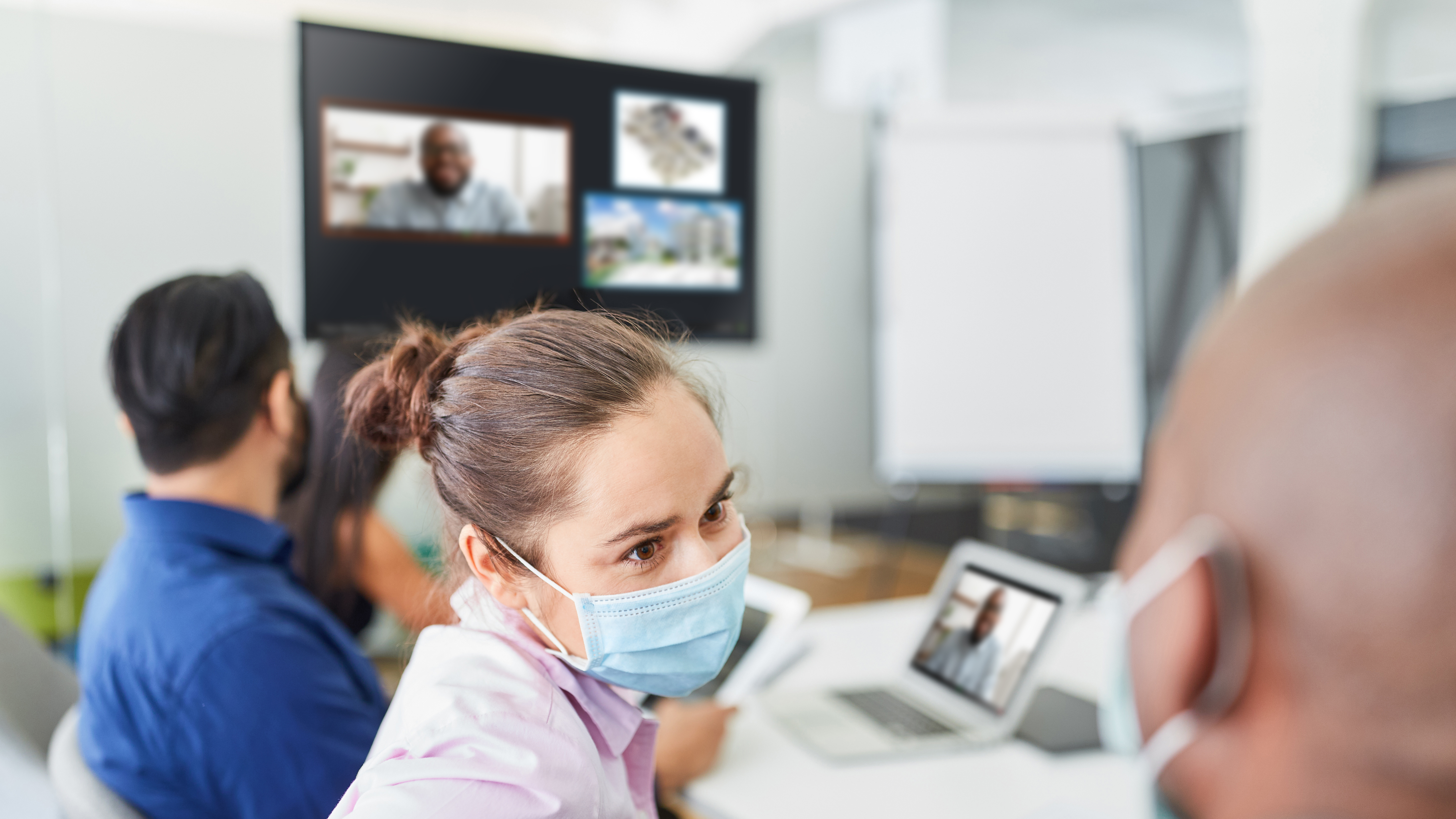Strategies for the ‘return to work’ are as varied as organizations themselves. How can organizations ensure safe but effective meeting spaces for their employees? Here are some tips for using technology to prepare meeting spaces for the safe return to work.

While our pandemic-driven exit from the workplace was hurried, our return will be anything but. Organizations have serious considerations to make in planning their return to work.
Both OSHA and the CDC provide considerations for individuals returning to work and valuable guidance for organizations to develop safe return-to-work strategies, guidelines, and workspaces. Many of the building safety recommendations and guidelines revolve around creating and maintaining a healthy work environment, including communication of safety protocols, proper social distancing and building ventilation considerations, and guidance for cleaning and disinfecting.
As we explored in a previous blog, among the most important spaces to consider are meeting spaces. While individual work may be possible from anywhere, it’s collaboration that will bring workers back to the office. How can we keep our meeting spaces safe and hygienic, yet still enable engaging and productive in-person meetings? Luckily, existing meeting room technology can be used to support a healthy workplace plan and communicate new health and safety protocols to employees. Here are three ways meeting room technology can help.
-
Prepare Safe Meeting Spaces In preparing safe meeting spaces, choose safe solutions that support the new hybrid workforces, including touchless, BYOM, and overflow space solutions.
Some considerations:
-
- Where possible, go touchless. While Clorox isn’t going out of business any time soon, and disinfecting spaces will be critical, eliminating shared touchpoints where possible will further help to decrease the spread of the virus. In the meeting room, this means focusing on touchless meeting space solutions where users can collaborate and utilize room technology through their mobile devices and laptops rather than room control panels and cables.
- The new hybrid workforce has brought tremendous growth in video conferencing. Incorporating Bring Your Own Meeting (BYOM) solutions allows users to leverage conferencing systems on their laptops, providing agnostic conferencing support for all major video conferencing services through a touchless interface (their personal laptop).
- Social distancing guidelines will require the de-densification of meeting spaces. The creation of overflow spaces for meetings supports safe, socially-distanced collaboration through software-based video routing and conferencing.
-
-
Keep Workers Informed of Workplace Health & Safety Guidelines Digital signage, customizable welcome screens, and room calendar displays can all provide valuable messaging for your workers.
Some ideas:
- Integrated digital signage can be used for pervasive office communications around social distancing, mask requirements, and practical hygiene reminders such as hand-washing best practices and the cleaning of personal work stations and common areas.
- Use customizable welcome screens to display maximum room occupancy, overflow room information, and other general health and safety tips.
- Room calendar integration can be used to display scheduled cleaning times for meeting spaces, blocking time for full disinfecting between meetings and at the end of the day. Providing the schedule on the room display also allows employees to see if a space is available and whether it has been cleaned
-
Use Workplace Analytics to Measure & Optimize Spaces As the t-shirts say, ‘data is the new bacon’. It’s hot, it’s delicious, and it’s essential to a good breakfast – or in this case, business – buffet. If ‘everything is better with bacon’ then certainly businesses are better with data. Workplace analytics will enable organizations to measure the return to work in a meaningful way, helping IT administrators and decision-makers to better understand and plan for changes in the workplace.
Some suggestions:
- Occupancy sensor technology will allow admins to monitor and manage room density, which will become important as we seek ways for onsite but socially distanced collaboration.
- Analytics around meeting space use will give organizations insights into which meeting spaces are being used the most often, which meeting spaces are being avoided, and how frequently people are meeting. How does this data compare to pre-COVID? Are employees more comfortable in open-air huddle spaces than closed conference rooms? These considerations can impact future building, facility, and technology decisions.
- Insights into remote vs. onsite meeting attendees and which video-conferencing services are being used will also help technology admins understand how to better support the new hybrid workforce.
Workplace analytics can inform both near-, mid-, and long term office and meeting space planning. The pandemic will likely have real and lasting implications on how organizations plan and use space, infrastructure, and technology. Collaboration technology with analytics capabilities can help building administrators and decision-makers plan spaces that will keep their employees safe, engaged, and productive now and into the future. Stay tuned for more on meeting space analytics in a future blog.

While meeting spaces are only one element of safe return to work planning, they are among the most important spaces to evaluate because they are where people come together to collaborate. What other meeting space technology considerations is your organization considering? Leave a comment below.
